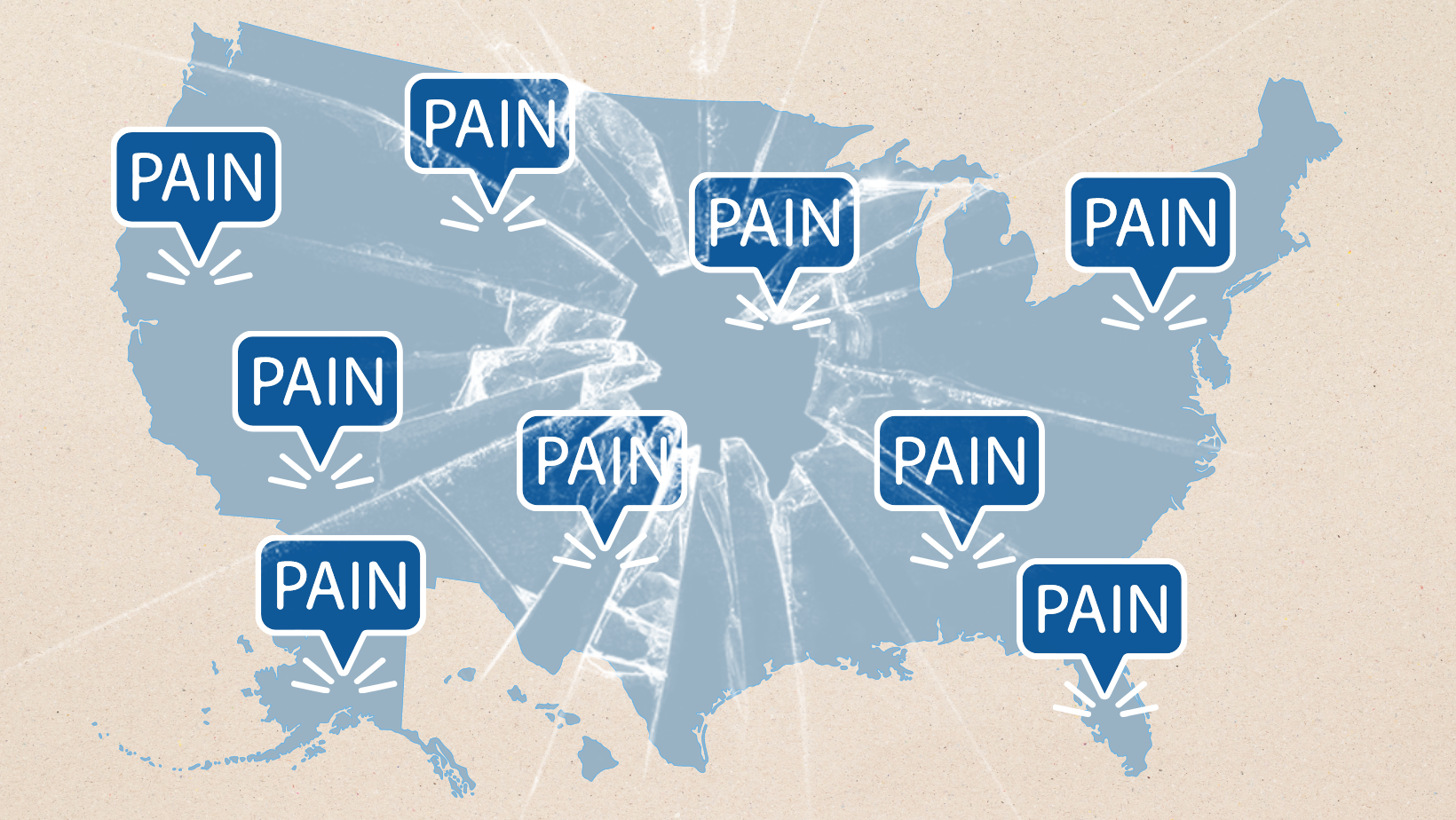
The latest population health data findings from the Centers for Disease Prevention and Control (CDC) reiterate an often-overlooked fact: millions of Americans are living with daily pain.
Almost 21% of the U.S. population—51.6 million adults—lives with chronic pain, defined as pain lasting more than three months. Of those, 17.1 million live with high-impact chronic pain that substantially restricts their ability to work or participate in daily activities.
The CDC gathers this data through questions asked on the extensive National Health Interview Survey. Several years’ worth of surveys have shown similar results about chronic pain in America.
The numbers underscore the need for greater understanding of chronic pain and more treatment options — which goes back to the need for more pain research, a key focus of chronic pain advocacy efforts.
“Nothing happens unless advocates make it happen,” says Cindy Steinberg, U.S. Pain Foundation’s director of policy and advocacy. “Every time you read about new research findings or new therapeutics for a disease or condition, you can be sure that hundreds of people were in front of Congress educating them on the need. We had an important role in making sure this data was analyzed and reported.”
An epidemic hiding in plain sight
The CDC data found a higher prevalence of chronic pain among populations that also face greater health care disparities. For instance, American Indian and Alaska Native adults were twice as likely as white adults to experience chronic pain.
Other groups experiencing higher rates of chronic pain or high-impact chronic pain included bisexual individuals, rural residents, people who are divorced or separated, those living under the federal poverty level, older adults, women, unemployed individuals, veterans, and those with public health insurance.
“The disparities just jump out at you,” Steinberg says. “The overall chronic pain numbers are bad enough, but the unevenness in care is that much more impactful for certain populations.”
A recent article by National Institutes of Health’s Richard Nahin in the Journal of the American Medical Association also stated that the rate of growth of chronic pain in the United States is exceeding that of other major conditions such as depression, diabetes, and hypertension.
“When people are faced with these numbers, how can we not do something about this?” Steinberg says. “We’re talking about something that affects millions upon millions of people. It’s an epidemic hiding in plain sight—policymakers and the general public hardly notice it.”
Further research is needed
Although having concrete numbers is a start, more illumination is needed on the problem of chronic pain in America to spur research that will expand treatment options.
For instance, there is too little known about pediatric pain. Better statistics need to be gathered regarding children’s chronic pain, which in turn will drive more child-focused research, says Casey Cashman, director of fundraising and the Pediatric Pain Warrior Program for the U.S. Pain Foundation.
“Somebody who’s five or eight years old versus somebody who’s 45 years old is completely different when it comes to how they will respond to medications or other treatments,” Cashman shares. “Somebody who hasn’t gone through puberty is, developmentally, completely different. From a treatment and research standpoint, we have to weigh that differently.”
In turn, research efforts focused on pediatric pain, and greater treatment options, mean that improved outcomes for kids can be reached earlier.
“Expanding treatment options for kids would have a huge impact,” states Cashman. “Further treatment options appropriate for pediatric use are needed to set these patients up for a more successful future with better health outcomes.”
Other gaps in chronic pain data include concrete information about its financial cost, statistics about pain among veterans, and details about the specific medical conditions that are causing pain.
“The number-one reason this data is important is so people recognize how much this destroys people’s lives, and how many people are affected, so that more can be done to help people with pain,” Steinberg explains. “If enough people scream about a problem, and if it’s a really prevalent problem, Congress starts to put money into funding programs to improve care, and into research to find better therapies.”
This September, join us as we talk #PainTrials and explore the world of pain research, the need for more research, and the impact that research can have on your life. Continue to follow us throughout Pain Awareness Month for daily statistics and facts, informational articles and webinars, social media sharing, and more.
Subscribe to our newsletter
U.S. Pain Foundation is a 501 (c)(3) nonprofit organization dedicated to serving those who live with conditions that cause chronic pain, as well as their caregivers and care providers. Learn more.
Our Sponsors
U.S. Pain Foundation relies on the generosity of donations and grants. We are especially thankful to our Corporate Council for sustaining our programs and services year-round. Learn more.
Contact Us
U.S. Pain Foundation, Inc.
15 North Main Street, Unit 100
West Hartford, CT 06107
Telephone: 800.910.2462
Email:
contact@uspainfoundation.org
Tax ID number: 26-2703521
All Content Copyright 2021 | All rights reserved. U.S. Pain Foundation is a qualified 501(c)(3) tax-exempt organization. Disclaimer
